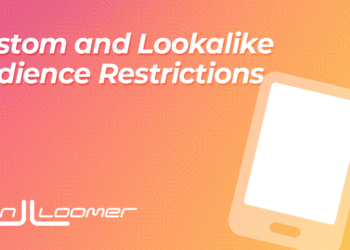Black Friday Cyber Monday (BFCM) presents the biggest opportunity of the year for most businesses using Meta ads, when consumers are most willing and motivated to buy. But you need to have a plan.
The problem is that businesses know that this is an important time. They invest more in marketing and advertising during the month leading up to Black Friday. And because of that, there’s more noise and competition.
Just because this tends to be a profitable time doesn’t guarantee results. As ad dollars and competition increase, the cost to reach people will increase, too. Plan poorly, and you could look back at this time with regret: Wasted ad dollars and wasted opportunity.
Don’t let it overwhelm you. I wrote out some basic steps to plan for a successful BFCM. This includes some generic marketing planning before we get into how you should approach your Meta ads.
Plan and Build Early
If you’re a procrastinator, I get it. I’m generally most comfortable procrastinating and acting with a deadline, motivated by inspiration. But this is not a time to wait until the last minute.
You need to start planning and building now so that you can involve all of the necessary people and resources. Everyone needs proper warning so that you aren’t scrambling with a half-baked offer on Thanksgiving Day.
These questions will help shape your offer and set the foundation for your campaign…
1. Site-wide or product-specific offer?
You’ll need to think through whether your offer will apply to a single product, multiple products, or all products. Keep it as simple as possible.
Will you use a promo code or will the website be updated to reflect the new price?
2. When will it start and end?
You could start your offer on Black Friday and extend it through Cyber Monday. But it’s become popular to extend this window in recent years.
In fact, I’ve followed this approach myself in recent years. I start an “Early Black Friday Cyber Monday” offer in the weeks prior to what would normally be the short promotion window. It helps avoid the chaotic noise while also having some eventual urgency.
3. Will anyone get special treatment?
I’ll talk more about leveraging multiple channels in a moment, but I tend to first notify people on my list. In some cases, I’ll even give special treatment to people who have bought from me before or who have been on my list the longest.
4. Will there be a limit?
Scarcity and urgency can help further motivate people to buy. But it’s also potentially dangerous if not executed in good faith. We’ve all seen far too many examples of false scarcity, and it’s a good way to lose trust.
I’m planning separate offers, one that is an exclusive to a special group and one that is more broadly available. The exclusive offer will have a limit, but the public version won’t.
5. What creative is needed?
Will the website need to be updated? You may want to consider a sticky promo bar on the home page or every page. Will the landing page need to be updated? What creative will you need for your ads?
Think through all of this early so that whoever produces the creative assets has enough lead time.
Leverage Multiple Channels
One mistake Meta advertisers make is that they put all of the pressure of a profitable campaign on the ads themselves. But you should be leveraging all of your channels to help make your ads more effective:
- Organic Social
- Paid Social
- Website
- Podcast/other
Each channel supports the others. The more cohesive your rollout, the stronger your results will be.
My list is a huge part of my overall marketing strategy and success. People on my list know to expect emails from me because I deliver value each week. And every now and then, I’ll send them an offer. I have planned when I am sending these offers and who within my list will receive each email.
Apply this to whatever channels will be part of your rollout.
Focus Less on the ‘HOW’
I started with a generic marketing plan before getting to the ads because I don’t want to assume that all of that will be taken care of. But now let’s get to your Meta advertising.
Too many advertisers obsess over the technical setup (the ‘how’) instead of the foundational elements that actually drive results. This is where advertisers will get lost in the endless web of strategies and random guru advice. Do not get lost in the ‘HOW’ of Meta advertising when planning this out.
Don’t get bogged down in questions like…
- How many campaigns are you going to have?
- How many ad sets within each one?
- How many ads?
- How will you approach performance goals?
- Bidding?
- Targeting?
- Placements?
If you look at any of this stuff as the secret to why you will or won’t have a profitable BFCM, you’re already set up for failure. No strategy or campaign structure will guarantee your success.
Start With Simple
If you’ve followed me for long, you know that I recommend a simplified approach to Meta advertising. And while you can always add complexity later, you’re better off starting with simple and going from there.
A few places to start…
1. Minimize the number of campaigns and ad sets to consolidate your budget.
2. Focus on using the Sales campaign objective and performance goal that maximizes conversions if you’re selling anything.
3. Stick with the defaults for attribution setting and placements.
4. Yes, lean into broad targeting in most cases (read this and this about targeting).
The less you worry about these details, the more time you can dedicate to what matters most. You can add complexity if absolutely critical, but it should be secondary throughout the planning process.
Focus More on the ‘WHAT’
The ‘What’ of Meta advertising is most important. It’s a collection of all of the things that have the most impact on whether or not you run a successful campaign. ‘What’ are you promoting?
Things like…
- The product
- The price (offer)
- The messaging
- The creative
- The landing page
Pick a product that will be easy to sell during this time. And make sure to create an interesting offer that is impossible to ignore.
After that, know that no ad or landing page is perfect. Because of this fact, they can always be better, and you can always do more. Dedicate the most time and planning here.
When you create your ads, plan out the customer personas, pain points, solutions, and angles that you will take with your ads. This is more complicated than simply plastering a picture of your product and ALL CAPS that it’s a special deal. Or maybe include that within your options and see how it goes.
Read my blog post for more guidance on copy and creative planning.
Dedicate Most of Your Effort to Creative Optimization
Possibly the most confused and misunderstood area of ad creation is around creative optimization by placement. It is easy to screw this part up, even if you’re an experienced advertiser.
Some things to consider…
1. Different aspect ratios by placement and format.
This is where Meta could be way more helpful. While you’re asked for three versions (1:1, 9:16, and 1.91:1) when you upload creative, this isn’t optimized. You’re better off with 4:5 rather than square in some placements. And whether you can use 1:1 or 4:5 will depend on the format.
I created a grid that can help with this.
2. Center the important part so that it remains croppable.
While you could customize creative by placement to make sure each placement uses the optimal aspect ratio, there’s a much simpler approach. Whether you use 9:16 or 4:5, make sure that it can be cropped down to 1:1 while maintaining its integrity.
This is something I’ll do when using Flexible Format since you can’t customize by placement when using that option in the first place. Test by cropping out the top and bottom while retaining the middle square. If you’d be okay with seeing that version as an ad, the creative should be fine for any placement.
3. Lean into creative diversification.
Meta now recommends creative diversification to get the most out of Andromeda. That means more formats (static images, videos, carousels, catalog ads) and distinctly different visuals and messaging.
Don’t create more variations just to check a box. Every version should serve a purpose or reflect a unique angle.
Read this post if you need help.
4. Use the advanced preview before publishing your ads.
Do not neglect the advanced preview. Use this tool to verify how your ad will appear across placements before you waste budget on avoidable mistakes. This simple step can help catch lots of problems before publishing.
If everything looks good, regardless of placement, it should be safe to publish.
Your Turn
What are your plans for BFCM this year?
Let me know in the comments below!












![The Future of B2B Buying [+ video]](https://mgrowtech.com/wp-content/uploads/2025/10/Featured-image-for-QA-120x86.png)


